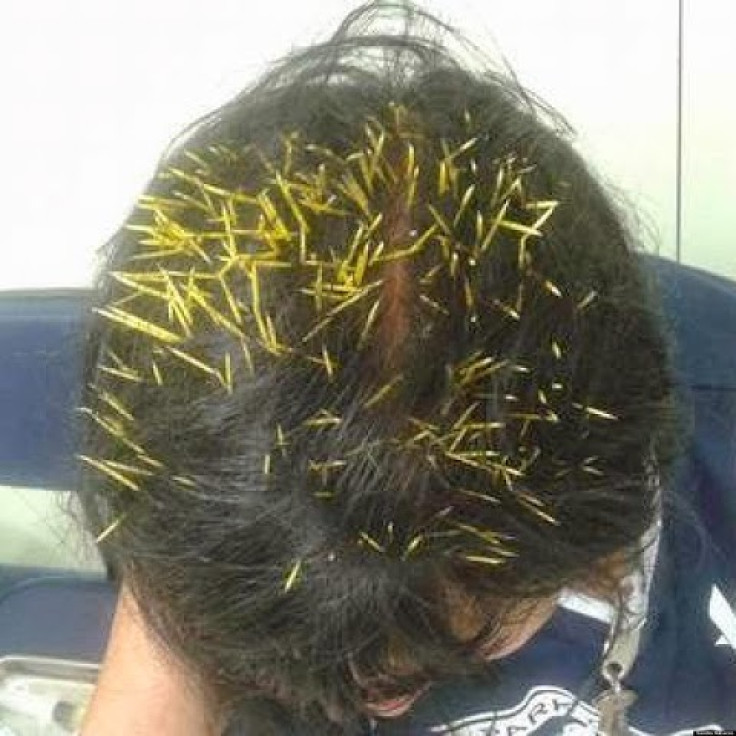Horrific Encounter with Porcupine Leaves Brazilian Woman with 272 Needles in her Scalp [VIDEO]

Sandra Nabucco from Rio de Janeiro was left with 272 painful quills in her head after a porcupine fell from a lamppost and landed on her head.
"It was quite a shock. I felt something land on my head and then felt the spines with my hands. The pain was enormous," Nabucco told Brazilian news site Globo.
"The surgeon took them out with tweezers. There must have been around 200. I'm a strong woman; an old person or a child would have died.
"Someone told me there was a pair of porcupines living in the area, but I had never seen them."
The porcupine is believed to have survived the fall. "I saved this animal's life. He broke his fall on my head," Nabucco said.
Porcupines are rodents with a coat of sharp spines, or quills, that defend them from predators. The name porcupine comes from Middle French porc espin, meaning spined pig.
Quills are released by contact with them, or they may drop out when the porcupine shakes its body. It was once believed that porcupines could eject their quills at an enemy, but this has been disproved.
Porcupines are generally fearful of large animals such as humans, and they're not known for making aggressive attacks. If a porcupine feels threatened, its quills will stick up.
The animal can also swing its quill-covered tail towards a potential attacker, but porcupines are near-sighted and slow-moving, so most injuries from the spines come from animals getting too close to the porcupine.
Porcupine quills have recently inspired a new type of hypodermic needle. Thanks to backward-facing barbs on the quills, when used as needles, they are particularly good at two things – penetrating the skin and remaining in place.
Watch video of porcupine v bulldog, below:
© Copyright IBTimes 2024. All rights reserved.






